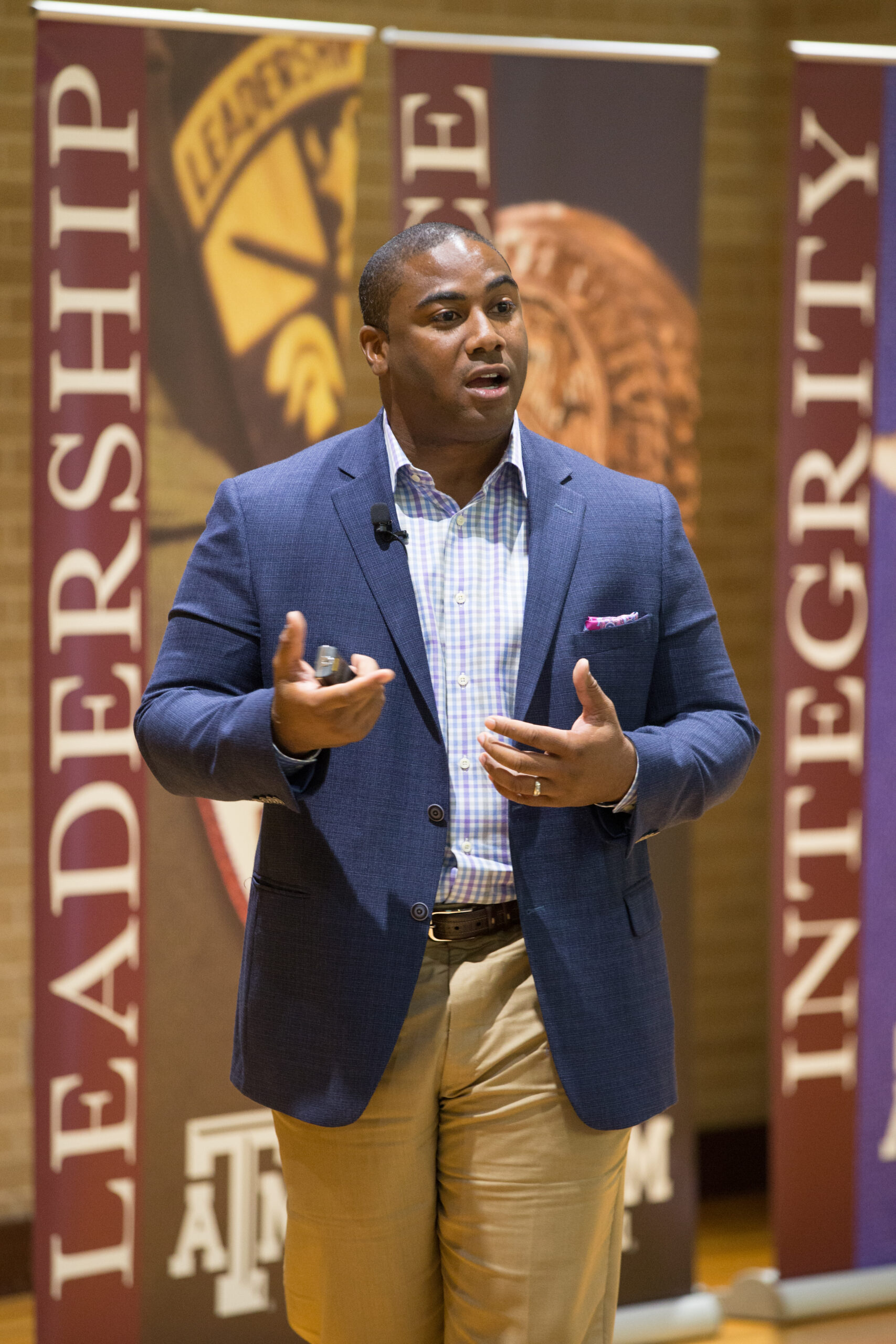Bridgestone’s Vision 2020 and calling the customer ‘boss’
September 16, 2016
|
Mays Business School
Damien Harmon delivered his message about building trust with customers — who he called “boss”— to a packed house of nearly 500 students, faculty and staff at Mays Business School on Sept. 7. Harmon, the vice president of operations at Bridgestone Retail Operations, was the featured speaker of the 19th annual M.B. Zale Visionary Merchant Lecture Series, hosted by The Center for Retailing Studies at Mays Business School.

Journey onward
A father of six and a former NFL player, Harmon began his career in retail while working as a store manager for Best Buy. Overseeing $16 million in sales annually, he demonstrated his ability to lead and know different types of people. He was soon selected to oversee the opening of Best Buy operations in China and Turkey.
From an early age, Harmon’s success was credited to his mother for her entrepreneurial spirit and determination to see her children do well in life. Growing up in small town Gary, Indiana, academic study became the promise to a broader world. Through his mother’s encouragement, he developed an outside-the-box mindset that would propel him forward.
Logging upwards of a million miles a year to implement and grow Best Buy’s international business, Harmon developed expertise in marketing and store operations with the electronics giant, before joining Bridgestone Retail Operations.
Harmon’s eagerness to embrace challenge became the foundation for his current role as vice president of operations, leading to development of its strategic customer experience platform. He also maintains direct responsibility over retail operations, supply chain, IT, customer retention and service capability.
Stone Bridge
Harmon shared the story of his company, which he said manufactures one in six tires worldwide.
Japanese-born Shojiro Ishibashi sought to create a company that would produce the world’s best-quality tire. He followed in the footsteps of Harvey Firestone, one of America’s major innovators, and his buddies Henry Ford and Thomas Edison. In 1931, after analyzing and evaluating Firestone’s business model, Ishibashi, whose last name translates to “stone bridge,” established Bridgestone in Japan.
In 1988, Bridgestone acquired Firestone and added to the vast existing footprint in the Americas and in Europe. The merger made the company the largest tire supplier in the world with over 2,200 retail stores in the U.S. alone.
Bridgestone Americas is an expansive corporation though manufacturing building products, fibers and textiles, natural rubber and industrial products. Harmon, who drives a Tesla, joked that although he works for the company, he only recently discovered the car’s air spring is in fact made by Firestone.
VISION 2020
Twice, Harmon advised students to have a “maniacal, crazy focus on learning.” He said good leaders should constantly seek ways to refine their skills and described how out of the company’s effort to improve itself, Vision 2020 was born.
Today, Bridgestone operates more like a retailer than a manufacturing company. Harmon said asking what was most important to the “bosses,” the company shifted its view of customers from one-time, transactional interactions to lifetime partners in business.
Due to a constant “race for trust” within the automotive service and repair industry, Bridgestone’s Vision 2020 strategy has evolved to include:
- Becoming the most trusted provider in every neighborhood served
- Changing the face of an industry where trust is an issue
- Being ranked among the most admired customer service companies
- Creating lifetime customers
- Increasing boss loyalty
Bridgestone also selected Texas A&M University as one of its core partner schools for recruitment.
In concluding, Harmon stressed the importance of building personal networks, surrounding yourself with diversity, delivering on your promises, and being resilient through tough times — all applicable lessons that reflect Firestone’s and Ishibashi’s entrepreneurial vision, and Bridgestone’s success.


